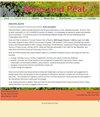与有机土壤再湿润有关的温室气体排放因子
IF 1.5
4区 环境科学与生态学
Q4 ENVIRONMENTAL SCIENCES
引用次数: 168
摘要
排干的有机土壤是向大气排放温室气体(GHG)的重要来源。重新润湿这些土壤可以减少温室气体排放,也可以为不排水有机土壤特征的碳(C)汇功能的回归创造合适的条件。在这篇文章中,我们扩展了与2014年政府间气候变化专门委员会(IPCC)湿地补编有关的再湿有机土壤的工作。我们描述了用于推导与有机土壤再湿润相关的整套温室气体和水基碳通量的一级排放因子(每单位活动的排放率)的方法和科学方法。通过广泛的文献检索,我们共记录了352个温室气体和水运年通量数据点,并按通量类型(即CO2、CH4、N2O和DOC)、气候带和营养状况进行了分类。研究结果表明,排水有机土壤和复湿有机土壤的温室气体动态存在根本差异,基于每一种气体的100年全球变暖潜势,表明排水有机土壤的复湿导致大多数有机土壤类别的CO2年净清除;年甲烷排放量增加;N2O和DOC损失减少;降低温室气体净排放量。自湿地增刊以来公布的数据(n = 58)基本上支持我们的推导。存在着重大的数据缺口,特别是在热带有机土壤、DOC和N2O方面。我们建议,与我们的推导相关的不确定性可以通过国家特定排放因子的发展而显著降低,这些排放因子反过来可以通过植被组成、地下水位、自再湿润以来的时间和以前的土地利用历史等因素进行分解。本文章由计算机程序翻译,如有差异,请以英文原文为准。
Greenhouse gas emission factors associated with rewetting of organic soils
Drained organic soils are a significant source of greenhouse gas (GHG) emissions to the atmosphere. Rewetting these soils may reduce GHG emissions and could also create suitable conditions for return of the carbon (C) sink function characteristic of undrained organic soils. In this article we expand on the work relating to rewetted organic soils that was carried out for the 2014 Intergovernmental Panel on Climate Change (IPCC) Wetlands Supplement. We describe the methods and scientific approach used to derive the Tier 1 emission factors (the rate of emission per unit of activity) for the full suite of GHG and waterborne C fluxes associated with rewetting of organic soils. We recorded a total of 352 GHG and waterborne annual flux data points from an extensive literature search and these were disaggregated by flux type (i.e. CO2, CH4, N2O and DOC), climate zone and nutrient status. Our results showed fundamental differences between the GHG dynamics of drained and rewetted organic soils and, based on the 100 year global warming potential of each gas, indicated that rewetting of drained organic soils leads to: net annual removals of CO2 in the majority of organic soil classes; an increase in annual CH4 emissions; a decrease in N2O and DOC losses; and a lowering of net GHG emissions. Data published since the Wetlands Supplement (n = 58) generally support our derivations. Significant data gaps exist, particularly with regard to tropical organic soils, DOC and N2O. We propose that the uncertainty associated with our derivations could be significantly reduced by the development of country specific emission factors that could in turn be disaggregated by factors such as vegetation composition, water table level, time since rewetting and previous land use history.
求助全文
通过发布文献求助,成功后即可免费获取论文全文。
去求助
来源期刊

Mires and Peat
ENVIRONMENTAL SCIENCES-
CiteScore
2.30
自引率
16.70%
发文量
0
审稿时长
33 weeks
期刊介绍:
Mires and Peat is a peer-reviewed internet journal focusing specifically on mires, peatlands and peat. As a truly “free-to-users” publication (i.e. NO CHARGES to authors OR readers), it is immediately accessible to readers and potential authors worldwide. It is published jointly by the International Peatland Society (IPS) and the International Mire Conservation Group (IMCG).
Mires and Peat is indexed by Thomson Reuters Web of Science (2017 Impact Factors: 1.326 [two-year] and 1.638 [five-year]), Elsevier Scopus, EBSCO Environment Complete, CABI Abstracts, CSA Proquest (including their Aquatic Science and Fisheries Abstracts ASFA, Ecology, Entomology, Animal Behavior, Aqualine and Pollution databases) and Directory of Open Access Journals (DOAJ). Mires and Peat also participates in the CABI Full Text Repository, and subscribes to the Portico E-journal Preservation Service (LTPA).
Mires and Peat publishes high-quality research papers on all aspects of peatland science, technology and wise use, including:
ecology, hydrology, survey, inventory, classification, functions and values of mires and peatlands;
scientific, economic and human aspects of the management of peatlands for agriculture, forestry, nature conservation, environmental protection, peat extraction, industrial development and other purposes;
biological, physical and chemical characteristics of peat; and
climate change and peatlands.
Short communications and review articles on these and related topics will also be considered; and suggestions for special issues of the Journal based on the proceedings of conferences, seminars, symposia and workshops will be welcomed. The submission of material by authors and from countries whose work would otherwise be inaccessible to the international community is particularly encouraged.
 求助内容:
求助内容: 应助结果提醒方式:
应助结果提醒方式:


